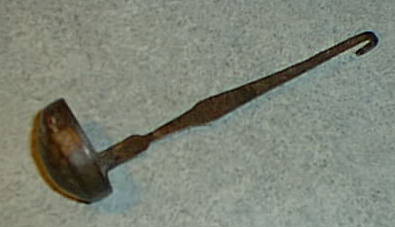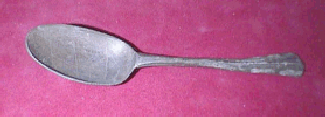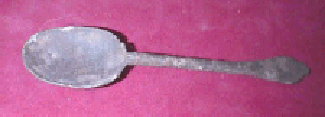![]()
This page contains photos of surviving 18th century artifacts and relics. By studying them we can duplicate the material culture of two centuries ago. Some items are easily reproduced, others require special skills and a little ingenuity. You can often simply purchase reproductions, see our links page for a list of living history suppliers. These photos are of artifacts in private collections and museums. Bear in mind that photographic quality and electronic media have a way of altering the look of some things, for instance, in the photo of us on the front page of this site, I actually look fat! All kidding aside, there is no substitue for actually examining an original artifact. I hope this page whets your appetite for more indepth research!
![]()
The most visible thing in a period camp is all the iron stuff heaped around the fire, how much of it is authentic?I'm sure we all have way too much of it in our camps, after all a group of militia or even an army would only carry what they really needed, but we like to show the public all of the 18th century technology that we can.

|
The basics would be an iron pot, or better yet, a brass or copper one. | 
|
To serve your boiled pork and cabbage, you will need a ladle, like this forged iron example.

To eat your food, you will want a spoon, spoons were made of iron, horn or wood, but by far the most common material was pewter. Pewter spoons are very common at archeological digs, like these from the middle colonies of Virginia and Maryland.



